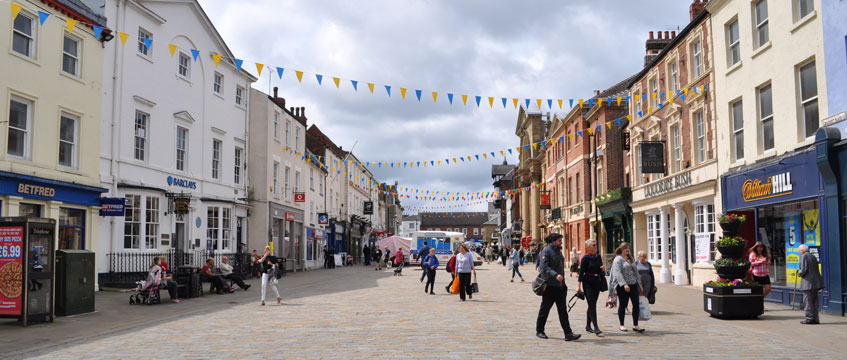It’s time to relight the embers of localism
The lifeblood of any town centre is its people. Consumers contribute to the overall health of any economy. In this instance, consumer reticence over the past decade to get out and “go shopping” has had a damaging effect on the bricks and mortar built to sustain it. Regional communities have been hardest hit by decade of austerity, resulting in a renewed plea for investment into towns across the country. A surge of capital is vital, as is recognition of the variety of socio-economic factors which are contributing to the change in spending habits.
Data shows that footfall across high streets and shopping centres has dropped year on year, while the health of out-of-town retail has also stuttered since the start of the last decade. The effects of this have been mirrored in vacancy rates across those traditional locations.
The lifeblood of any town centre is its people. Consumers contribute to the overall health of any economy. In this instance, consumer reticence over the past decade to get out and “go shopping” has had a damaging effect on the bricks and mortar built to sustain it. Regional communities have been hardest hit by decade of austerity, resulting in a renewed plea for investment into towns across the country. A surge of capital is vital, as is recognition of the variety of socio-economic factors which are contributing to the change in spending habits.
Data shows that footfall across high streets and shopping centres has dropped year on year, while the health of out-of-town retail has also stuttered since the start of the last decade. The effects of this have been mirrored in vacancy rates across those traditional locations.
The challenges facing a conventional retail offering are vast. A seismic rise of internet-based spend has moved the goal posts for bricks and mortar. EG’s analysis of ONS data shows that while spend in retail continues, it is decelerating, and that slowdown is mirrored in the internet sales market too. The proliferation of online spend is reaching its zenith.
Now that most are accustomed to the 21st century realities of retailing, the next challenges will be about engaging customers and encouraging them to spend. Breathing life into any existing retail-led destination will depend on the ability to understand the consumer which it supports.
Despite a post-election “Boris bounce”, consumer confidence has remained subdued in recent years, nosediving since the EU referendum in 2016. Since that period there has been increasing unease surrounding future employment security and economic expectations of the UK population.
This period of uncertainty is combining with increased financial strain on most people. Levels of disposable income are decreasing, despite most of us working for longer hours, and for less pay. These turbulent years have meant a default position of cynicism in the economy, especially since the double-dip of the financial crisis.
These economic challenges have come at a time when shopping habits have changed. It is now easier than ever before to find value which has wiped out retailers’ already wafer-thin margins.
Millennials are also buying less “stuff” and retailers vying for their spend are contending with a generation who are motivated by experience-led spend, laden with more debt than ever before, and who have reduced confidence to buy household goods because of a fall in homeownership.
As we enter a new decade it is unlikely there will be as much disruption as there was in the previous 10 years. The next challenge for real estate is to ensure town centres are effectively curated and properly invested in. There is no doubt that we need fewer stores in an age of Amazon, but local communities will be inordinately subjected to economic stagnation if left to struggle. Stimulating our town centres though reinvention of redundant retail will be the next chapter in the story of reanimation of the high streets. Restoring confidence in the economy can come from the grass roots. This must be the decade where we divest from inward city-based affluence and relight the embers of localism, supporting communities which need it the most. Calls to level-up the UK and unleash its potential are the current straplines from a Conservative majority. Success of converting lip service into tangible investment will be measured at the ballot box in five years’ time.
To send feedback, e-mail james.child@egi.co.uk or tweet @JamesChildEG or @estatesgazette











